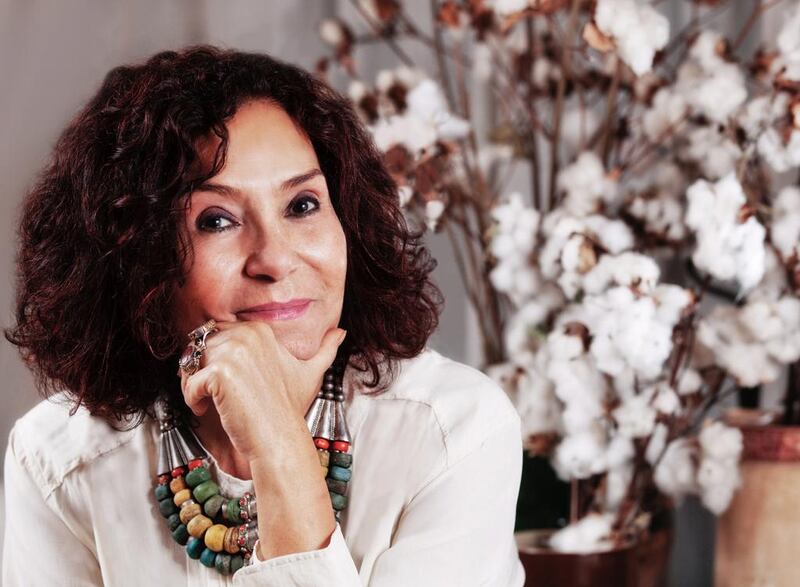“I didn’t think of gender differences when I decided to follow my passion,” says Azza Fahmy, in a soft but self-assured voice. Don’t mistake her confidence as the result of 45 years of experience and success; Fahmy was equally certain of herself when she stepped into Khan El Khalili, Cairo’s ancient jewellery quarter, to learn the tricks of jewellery making in a male-dominated world and amid societal disapproval.
But Fahmy didn’t let that faze her. The native Egyptian’s desire to acquire knowledge about an art that she loved was stronger than any physical or mental barrier. “All I wanted was to gain the necessary know-how to create the designs that were flooding my head,” she says.
Fahmy has been a pioneer most of her life. She gave Egypt its first luxury designer jewellery label in 1969. In the mid-1970s, she was granted a Fellowship by the British Council and invited to study jewellery design at the City of London Polytechnic (now London Guildhall University).
Since setting up a shop in Cairo in 1981, she hasn't looked back. Today, the Azza Fahmy label has expanded to boutiques around Egypt and Jordan and also retails in the United States, the United Kingdom, Qatar and Saudi Arabia. Customers in the UAE can shop for Fahmy's jewellery at Bloomingdale's and Harvey Nichols in Dubai, or from her online store, www.azzafahmy.com.
Fahmy’s jewellery speaks of her mastery over the craft, which she owes to years of meticulous research. “I’ve been to various parts of the world, including Morocco and Sudan, observed their architecture, read their history and taken down notes as I travelled.” She has also made multiple visits to museums, sat with Egyptologists to better understand the architecture of her country and poured her knowledge and experience into her pieces.
All her designs have a meaning and story behind them. Be it a bangle inspired by the great Egyptian singer Umm Kulthum, a ring based on Egyptian hieroglyphics or simply a neckpiece with a pharaonic symbol, Fahmy’s pieces strongly represent her country. “My ultimate goal is to preserve Egypt’s beauty in accurate, well-researched interpretations that can be worn and related to.”
It isn’t a coincidence that Fahmy is dubbed one of the most influential women in Egypt. She has taken on the role of translating the region’s culture for the world very seriously indeed. Numerous collaborations, including those with the British fashion designers Julien MacDonald and Matthew Williamson, have resulted in fascinating and popular collections. Fahmy feels that all her partnerships have offered her important insights on design.
She finds that people in the UAE are “extremely in tune with world trends and have a fantastic penchant for unique products and quality”. She has regular clients from the Middle East, including the royal families of Saudi Arabia, Kuwait, Bahrain and Jordan. “We create bespoke jewellery for interested patrons, especially from the Gulf, who like to turn religious poetry into wearable pieces of art.”
The Islamic and Egyptian cultures are just a few of the many interpreted in Fahmy’s designs. Her creations are also inspired by Ottoman, African and tribal civilisations, with the view that each design should be authentic and wearable. “In doing so, we create a link between the past and present,” she says.
From where does the designer draw inspiration? “It’s how you look at things and feel about them that determines whether they can inspire you. In my case, I feel blessed to find the source in almost anything I lay my eyes on.”
To document Egypt's rich heritage, Fahmy published a book called Enchanted Jewelry of Egypt: The Traditional Art and Craft in 2003. "I've always been fond of collecting jewellery and, over a period of time, realised that most of the pieces I own do not exist elsewhere."
That’s how the thought of writing a book was born. “Anyone interested in Egyptian heritage jewellery can refer to my book. For example, we have a tradition of melting down old silver jewellery to make new pieces in my country.” A reason why not many people have preserved their traditional heirlooms, perhaps.
To further preserve the art, the Azza Fahmy Design Studio, a jewellery-designing school, opened its doors to national and international students last year. “There’s a dearth of institutions for jewellery designing in Egypt. International techniques of instruction will bring out the creativity of aspiring designers and curb their tendency to copy each other,” she says.
Creating and inspiring has been a way of life for Fahmy for almost half a century. Today, her name is synonymous with Egyptian jewellery. Would she have done it any other way? “Everyone has a way of expressing themselves; for me, jewellery is the way I tell a story,” she smiles.





